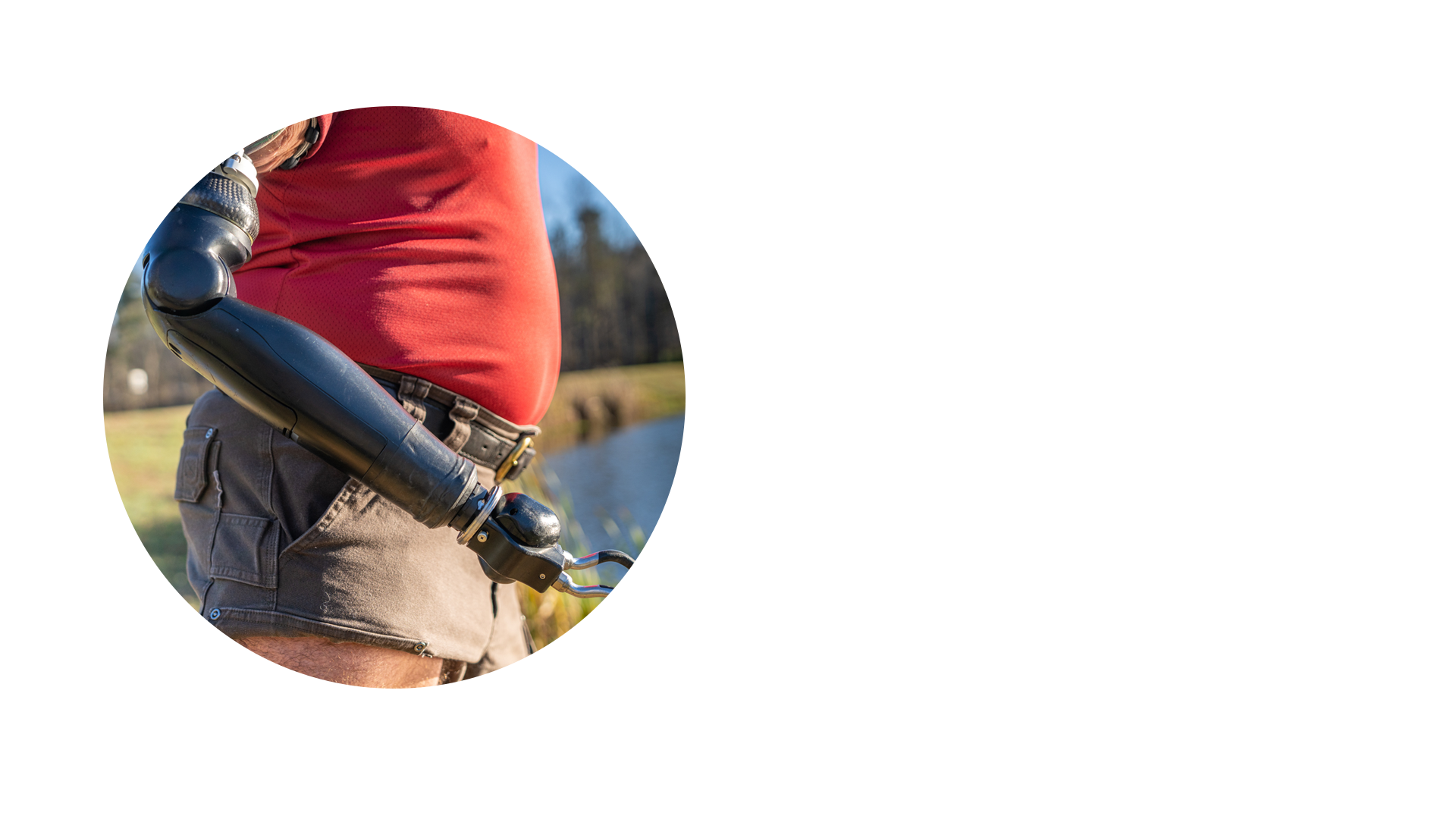
Osseointegration system for above-elbow amputations
Features
- Stability through bone anchoring
- Improved mobility and limb function
- Enhanced comfort due to lack of prosthetic sockets
Upper limb osseointegration
Osseointegration prosthetic arm
The OPRA® Implant System is an osseointegration prosthetic arm solution, a bone-anchored prosthesis attachment that creates a stable bond to the amputated limb. It is designed for stable prosthesis attachment in patients with amputations at various locations of the proximal or distal humerus. Once the surgical procedure has been completed to attach the OPRA® Implant System to the patient’s bone structure, it can be connected to the prosthesis using a connection device. The components for upper extremity attachment are customised for the indication level.
The OPRA® Implant System features BioHelix™ technology to promote stronger bone attachment. This unique technology was developed in close collaboration with the Department of Biomaterials at the University of Gothenburg. The results are a decreased patient healing time, increased strength of the bone-to-implant interface, and the formation of micro/nano-sized structures for greater osseointegration.
System contents:
The OPRA® Implant System follows a modular design with three main parts to achieve fixation and attachment. Each performs a vital function for osseointegration between patient anatomy and the prosthesis.
- Fixture – the anchoring element that screws into the bone from the site of the amputation.
- Abutment – the connecting piece that penetrates the skin.
- Abutment Screw – the screw that attaches the Abutment to the Fixture.
Interested in the Osseointegration system for above-elbow amputations?

Integrum has been performing research and development on orthopaedic solutions since the 1990s. The OPRA® Implant System offers an alternative to traditional socket prostheses, serving as a way to anchor directly to the bone. Through the provision of this medical device, Integrum aims to help amputees achieve an improved quality of life. Their evidence-based development has allowed for the creation of an osseointegration limb replacement that allows for improved range of movement. Integrum was officially founded in 1998 and has consistently provided bespoke solutions for amputee patients.
Frequently Asked Questions
Medical experts may recommend the amputation of a body part under certain circumstances if they believe there is a serious health risk of not doing so. Common examples include infection, disease, and tissue destruction that cannot be repaired or poses a risk to the individual’s life.
The OPRA® Implant System is designed for improved proprioception, meaning patients may have an unconscious perception of the amputated limb in relation to the rest of the body and the surrounding environment. Osseoperception may also improve, which is the transfer of sensory signals from the prosthetic limb through the patient’s bone.
The method of anchoring titanium directly to the bone has been tested and developed over the course of more than 60 years. Possible complications due to the surgery are not unusual, including but not limited to infection, bruising, bleeding, or soft tissue damage.